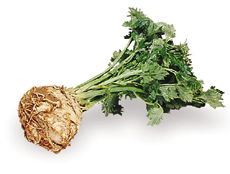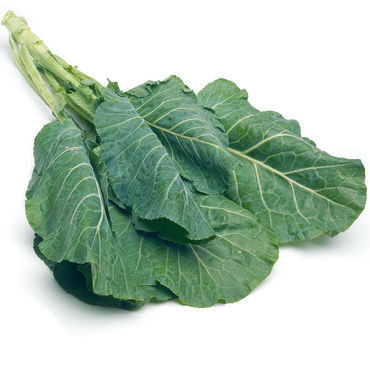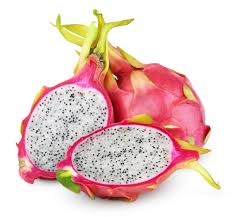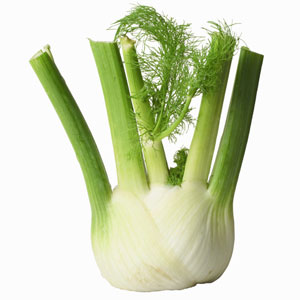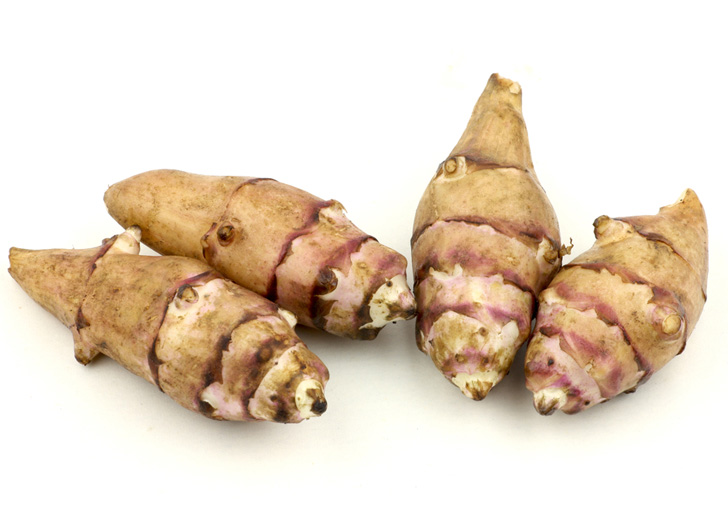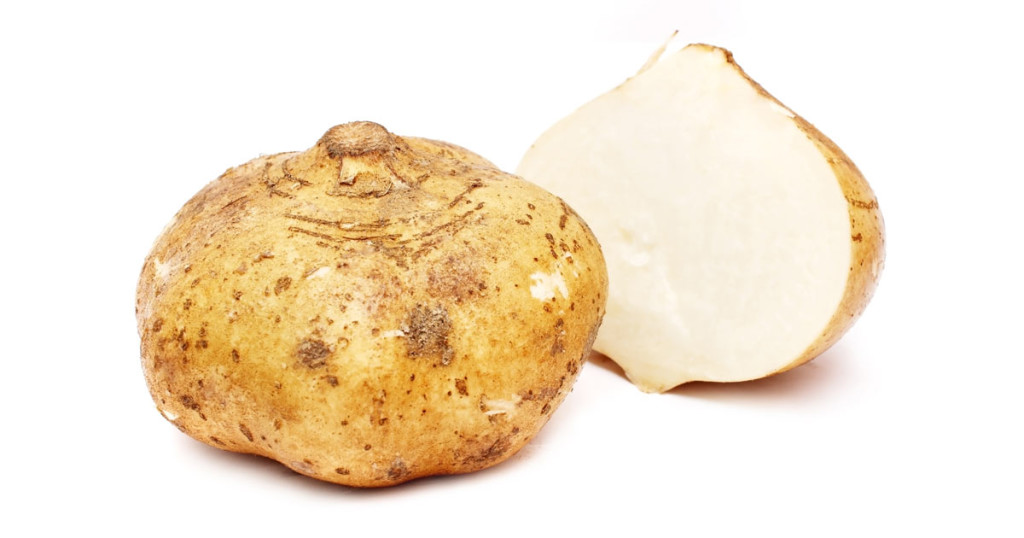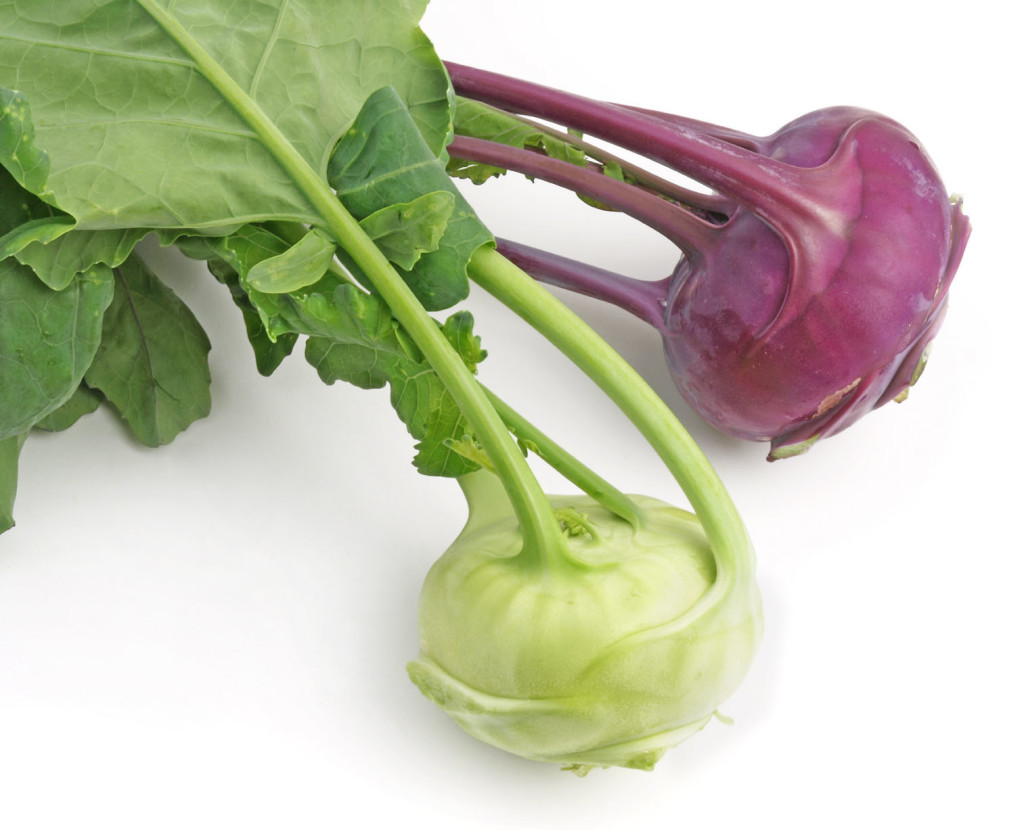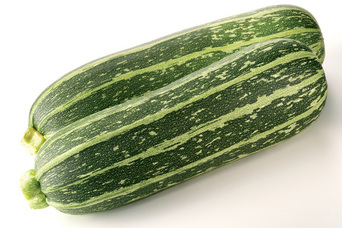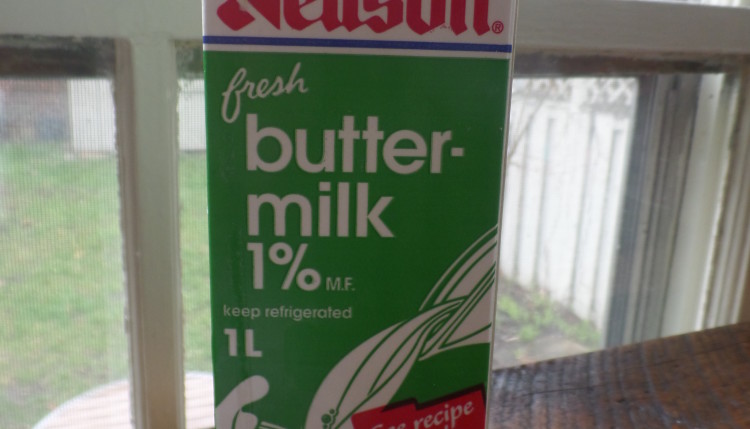
The Buttermilk Conundrum
What can I make with all this buttermilk?
This question plagued me when I was 15. Ok, plagued is maybe a bit strong, but I certainly wondered. I remember I had decided to make Edna Staebler’s Buttermilk Biscuits and since they don’t sell buttermilk in quantities smaller than 1 litre, I was stuck with an excess of buttermilk. It sat in the fridge and went bad before I could use it. The next time I had a hankering for biscuits, I planned ahead. I searched my copy of Schmecks Appeal and found dozens of other recipes using buttermilk. I checked the date on the carton and planned my baking schedule.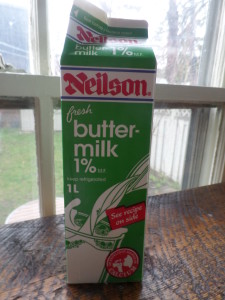
Since then I have given buttermilk a lot of thought. Once I found a cookbook that explained how to make buttermilk (1 tsp lemon juice in a cup of milk). So, now I had a back-up plan for when there was no buttermilk in the house, but over the years I still thought about this buttermilk conundrum.
And it’s not just buttermilk. There are a whole host of uncommon (or even downright weird!) ingredients that are featured in recipes. Here are a few that have tripped me up in the past: Galangal, Carob, Jaggery, Xanthum Gum ,Tapioca Starch, Rice Flour, Buckwheat flour, and Pomegranate molasses.
And the produce aisle can be just as challenging.
Sometimes that’s because you haven’t tasted the fruit or vegetable before, and sometimes it is because that item is not readily available in your location. Here are some examples I used to – or still do – find weird. : Fennel, artichokes, Jerusalem artichokes, Jicama, cassava, Swiss chard, collard greens, dragon fruit, persimmon, marrow, celery root, and kohlrabi. I’ll be honest, while I have learned to heartily embrace fennel, chard, and celery root, I have never eaten persimmon or kohlrabi. And I feel intimidated by them in the grocery store.
So…what to do. You want to try a recipe and then one of these strange ingredients shows up. You feel nervous and afraid. You could close the book or the web page, but instead, how about following my:
Guidelines for Weird Ingredients:
Step 1: Set a reasonable goal
Don’t pick a recipe that has 5 unfamiliar ingredients. That’s no way to start. Choose a recipe with one new ingredient. And if you’ve had to buy a large quantity of this ingredient, plan a way to use it. I love epicurious.com. You can type in an ingredient and find other recipes that use it. The first time I used celery root (also known as celeriac) that’s exactly what I did. I wanted to make Julia Child’s recipe for ‘Celeriac Remoulade’. I know it sounds fancy, but it is pretty much a grated salad with a mustardy dressing. Really simple. Then, on epicurious I found a recipe for a Celery Root Puree. In reading the recipes I learned that Celery Root can be treated pr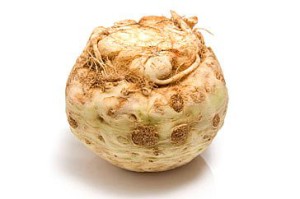 etty much the same as a potato. It’s a little firmer, that’s all. And it has this wonderful fresh celery fragrance. I took a gamble and made a Leek and Potato soup – but I substituted half of the potatoes for celery root. It was wonderful! A bit different, and I loved it. And I was proud that I had tried something new and that it had worked. Now I use celery root all the time.
etty much the same as a potato. It’s a little firmer, that’s all. And it has this wonderful fresh celery fragrance. I took a gamble and made a Leek and Potato soup – but I substituted half of the potatoes for celery root. It was wonderful! A bit different, and I loved it. And I was proud that I had tried something new and that it had worked. Now I use celery root all the time.
Step 2: Identify the importance of the ingredient in the recipe
Is it in the title of the recipe? One of the top three ingredients? Do you need more than a cup of it?
If it is a primary ingredient and you’ve never eaten it, think whether or not you want to try this recipe. You don’t know you’re going to like it. You may want to try this food, but maybe this isn’t the recipe to start with. Maybe that ingredient is something to try in a restaurant first. Find out how it is supposed to taste. Or, maybe you’re the adventurous type…
So, if you are the adventurous type, or if it is not a primary ingredient, you need to learn more.
Step 3: Google the ingredient
Find out what it tastes like and looks like. More importantly, find out its purpose in the recipe. 
Is it function or flavour? For example: an egg in a recipe has a function.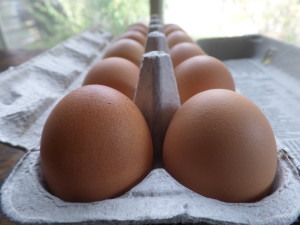 It binds or it leavens. Once you know which it is supposed to do, then you can substitute if you don’t have an egg on hand (or you have vegans coming over!). Lemon zest is flavour. If you don’t have any, is there another flavour that will work? Or can you skip it? The recipe doesn’t need it to be successful, but it does make it taste better.
It binds or it leavens. Once you know which it is supposed to do, then you can substitute if you don’t have an egg on hand (or you have vegans coming over!). Lemon zest is flavour. If you don’t have any, is there another flavour that will work? Or can you skip it? The recipe doesn’t need it to be successful, but it does make it taste better.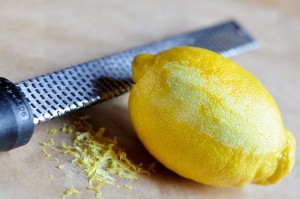
Years ago I tackled tapioca starch. 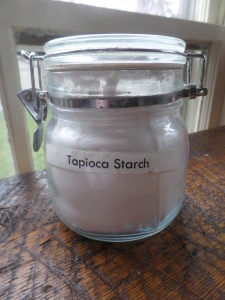 I had no idea what it was, but I saw it in many baking recipes. I looked up what it was (And I had to use a book because this was 15 years ago!) and I learned that it is a thickener, like cornstarch. It has a function. By and large it behaves similar to cornstarch in a recipe. Because I know what it does, I can make substitutions if I don’t have it on hand and I can feel confident the recipe will still work.
I had no idea what it was, but I saw it in many baking recipes. I looked up what it was (And I had to use a book because this was 15 years ago!) and I learned that it is a thickener, like cornstarch. It has a function. By and large it behaves similar to cornstarch in a recipe. Because I know what it does, I can make substitutions if I don’t have it on hand and I can feel confident the recipe will still work.
Have you ever heard of Galangal? I remember the first time I saw Galangal in a recipe.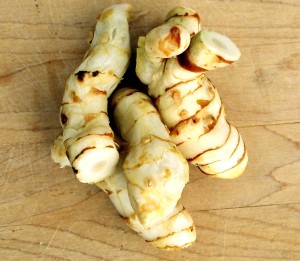 I had no idea what it was. I googled it and learned it was like ginger…but not exactly like ginger. It’s sharper, earthier, and citrus-y. It is a flavour. So, what to do? I only need a tablespoon of it. I’m not going to search three stores and make myself crazy for a tablespoon of galangal. Because I know its purpose in the recipe I can decide to skip it altogether, or add some ginger and some lemon zest or juice. It won’t be the exactly the same, but it will be fine. Everything will be fine. And still delicious.
I had no idea what it was. I googled it and learned it was like ginger…but not exactly like ginger. It’s sharper, earthier, and citrus-y. It is a flavour. So, what to do? I only need a tablespoon of it. I’m not going to search three stores and make myself crazy for a tablespoon of galangal. Because I know its purpose in the recipe I can decide to skip it altogether, or add some ginger and some lemon zest or juice. It won’t be the exactly the same, but it will be fine. Everything will be fine. And still delicious.
A tip – When searching Google, first search the ingredient and then search the ingredient in the type of food or dish you are making. That will help you understand the function. If you wind up looking at other recipes for the dish you want to make, you may learn that someone else has already made the substitution for you.
Step 4: Stay the course or Substitute
Once you know what it is and what it does, you can decide whether to use it or not. For example: You want to make a Swiss Chard Tart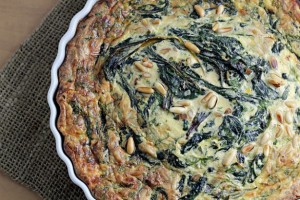 because you saw an awesome recipe and you’re feeling French. Swiss Chard is a primary ingredient but you don’t have it on hand, but you have seen what it is and know what it tastes like. It’s a dark, leafy green that is a little bitter. Like spinach. So, substitute spinach. Wilt it for less time because the leaves are smaller. Problem solved.
because you saw an awesome recipe and you’re feeling French. Swiss Chard is a primary ingredient but you don’t have it on hand, but you have seen what it is and know what it tastes like. It’s a dark, leafy green that is a little bitter. Like spinach. So, substitute spinach. Wilt it for less time because the leaves are smaller. Problem solved.
Step 5: Don’t beat yourself up
Cooking is art. Some person who may or may not have had any training made a dish and someone else said it was yummy and then the first person wrote it down. Ok, that’s really simplistic and I don’t mean to undermine chefs, but the majority of dishes are simple. Your grandmother knew how to make them – not because she was superhuman. 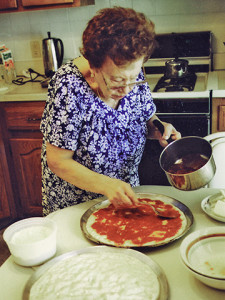 She knew how because people cooked. Grocery stores were filled with ingredients, not meals. Grandma had no choice! Cooking used to be a life skill. For many people, it’s not anymore. Today you can order anything at any time of day. You can have gourmet meals delivered. In this busy day and age there is no need to cook (gasp!) beyond personal satisfaction. So if you cook, YAY! You’re awesome. Keep doing it! If you don’t…what can I do to motivate you? You know you want to…
She knew how because people cooked. Grocery stores were filled with ingredients, not meals. Grandma had no choice! Cooking used to be a life skill. For many people, it’s not anymore. Today you can order anything at any time of day. You can have gourmet meals delivered. In this busy day and age there is no need to cook (gasp!) beyond personal satisfaction. So if you cook, YAY! You’re awesome. Keep doing it! If you don’t…what can I do to motivate you? You know you want to…
And let’s talk about what happens when the dish is a failure…
Sometimes recipes fail. It happens. It’s happened to me. Many times. It happens to everyone. Recently we had a dinner party planned and I decided to make Gnudi for the first time. 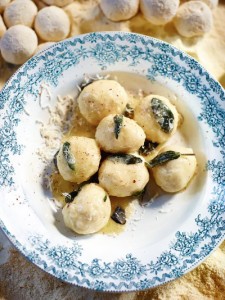 No practice-run because that’s how I roll – and ricotta is expensive! Gnudi is essentially the cheese filling of ravioli. I was using a Jamie Oliver recipe that I believe is well written and tested. I did the prep the day before and left the ricotta balls in semolina in the fridge to dry out overnight. Everything looked great. The next evening during the meal all I had to do was fry sage leaves in melted butter and briefly cook the Gnudi in boiling water. When the Gnudi hit the water they completely fell apart. The pot was filled with cheese water. It was a disgusting mess. I had intended 5 balls per person with plenty left over. I managed to salvage 3 per person with no leftovers. It didn’t look the way I had hoped, but it still tasted really good. Everyone seemed happy. Thankfully it wasn’t the main course. But if it had been, I could have ordered pizza and served more wine and we would have all laughed. Because a dinner party is as much about the people as it is about the food.
No practice-run because that’s how I roll – and ricotta is expensive! Gnudi is essentially the cheese filling of ravioli. I was using a Jamie Oliver recipe that I believe is well written and tested. I did the prep the day before and left the ricotta balls in semolina in the fridge to dry out overnight. Everything looked great. The next evening during the meal all I had to do was fry sage leaves in melted butter and briefly cook the Gnudi in boiling water. When the Gnudi hit the water they completely fell apart. The pot was filled with cheese water. It was a disgusting mess. I had intended 5 balls per person with plenty left over. I managed to salvage 3 per person with no leftovers. It didn’t look the way I had hoped, but it still tasted really good. Everyone seemed happy. Thankfully it wasn’t the main course. But if it had been, I could have ordered pizza and served more wine and we would have all laughed. Because a dinner party is as much about the people as it is about the food.
When kitchen failure happens to you, you have a choice. You can get mad, sad, sulky, irritated, or quiet, or you can laugh and learn. Because it happens to everyone (is there an echo in here?) you can laugh. And then you can come up with some inventive plating! And you can ask yourself and others (including the internet) what went wrong. I learned what went wrong with my Gnudi. The water wasn’t boiling enough. Or at least that’d what I think. We’ll see what happens the next time I try.
You can try again.
Maybe it was you, maybe it was the recipe. But you owe it to yourself to find out. Learning is supposed to be trial and error. Unless you graduated school with a 100% average, you used to know this. We think that adults are supposed to just know all this stuff. But you’re not and you don’t. So, screw up your courage, laugh at your mistakes, and get cooking.

A final thought on the buttermilk conundrum:
Now buttermilk is a staple ingredient in my fridge. I use it as a milk substitute in dozens of recipes. I soak fish in it before I cook fish. I love the tangy note it adds and I love that in baking it is lower in fat and yet somehow creamier. Sometimes a feared ingredient can become your favourite ingredient.
And one final note:
In writing this post I came across a page on Pinterest. Obscure ingredient recipes. The internet is awesome.


